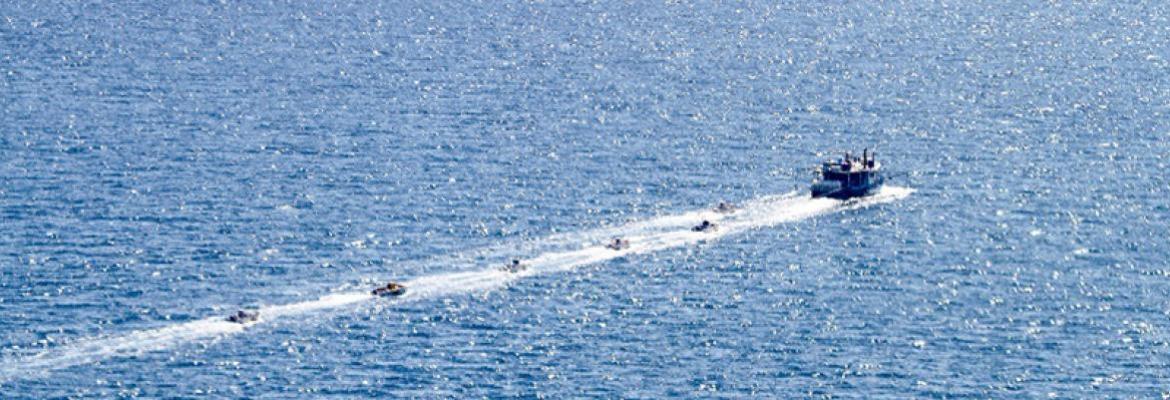
Dory operations are a type of tender operation that involve a fleet of small boats with only one or two people on board, fishing in a designated zone and reporting to a parent vessel overseeing their activities.
Installing a radio and registering beacons on all dories, ensuring crew wear life jackets, and equipping the vessel with the right safety gear is a good place to start in making sure your crew are safe.
Know when to use a beacon or other type of communications
Distress beacons help save lives every day, but there’s a quicker way for dories to call for help.
If a vessel breaks down, it’s faster to call someone nearby than to wait for a rescue service, so make sure you equip dory vessels with a marine radio, mobile or satellite phone.
Dories without phones or radios not only puts lives at risk, it can lead to unnecessary search and rescue responses.
In a distress situation, use a phone or radio first to alert the parent vessel or marine rescue.
If neither are available, or there isn’t time, activate a beacon.
That way our search and rescue services are available for life-threatening emergencies.
- Find out more about when you should use a beacon.
Keeping crew safe at sea
Equipping crew with the right safety equipment is part of the national law and includes making sure your crew can call for help when they need it.
The best way for a dory to maintain contact with the parent vessel is with a phone or radio and within visual contact.
So if a dory vessel breaks down, runs out of fuel, or there’s an emergency, the crew can quickly call for help from someone close by.
In a genuine emergency, a radio or phone will also help rescuers communicate with the crew and find out the vessel’s position, nature of distress, number of people on board, and type of assistance needed.
- Read our safety checklist.
- Find out more about how to prepare an SMS.
Make safety easy
Conduct a safety induction for all crew on board the parent vessel and tenders.
Every crew member must be trained and competent to operate a tender safely and know what to do if they stray from the parent vessel, get into trouble or have an emergency situation.
Know the drill—all crew should know the vessel’s SMS and what to do to stay safe.
- Involve your crew in the development, evaluation and review of your SMS.
- Schedule regular check-ins between vessels and know the specific return times.
- Practice emergency responses so every crew member knows what to do if they get into strife.
- Find out more about how to prepare an SMS.
Identify and address the risks
Every vessel and its operations are different. It’s a good idea for masters and crew to work together to identify the hazards and risks to their operations and identify ways to reduce or manage those risks.
First it’s important to do a risk assessment to identify:
- the main daily tasks carried out and the potential risks of each task
- ways to control the risks of each task
- the appropriate crew for each dory
- the procedures that need to be in place to deal with emergencies.
How to use a beacon
Before setting out, ensure all beacons are registered and the details are up to date—online registration is easy and you can update your registration details anytime.
The way to activate a beacon depends on the make and model. Check the manufacturer’s instructions before you head out to sea.
EPIRBs should only be used when a vessel is in genuine distress, as it results in an immediate search and rescue operation.
Make sure the beacon is stored in a safe, dry place so it can’t be set off accidentally.
If a beacon is activated accidentally, switch it off and call the AMSA Response Centre on 1800 641 792. There is no penalty for accidental activation.
Remember
- Use a radio or phone to maintain contact between dory and parent vessel
- Only deploy a beacon in a life-threatening situation
Register your beacon at beacons.amsa.gov.au.